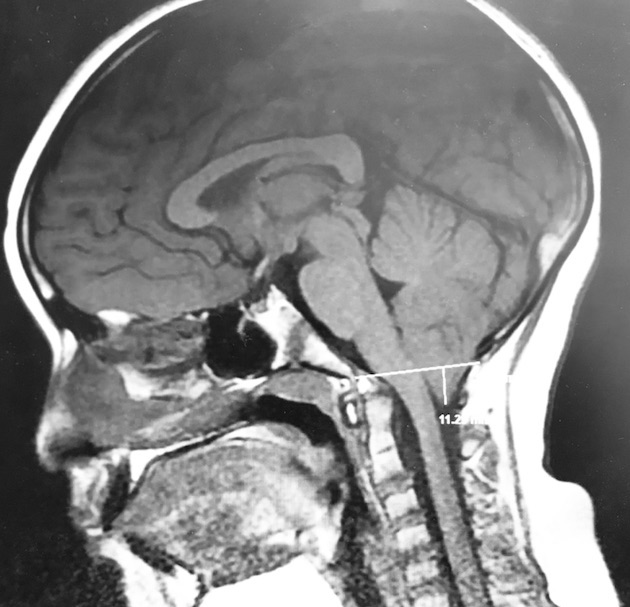Papilledema and Chiari I in childhood: case report
DOI:
https://doi.org/10.46900/apn.v5i3.199Keywords:
Arnold-Chiari malformation , papilledema, amaurosis, neurosurgery, case reportAbstract
Introduction: Chiari malformation type I (CM-I) is a condition characterized by an abnormal craniocervical transition whose main finding is cerebellar tonsillar ectopia of > 5 mm below the foramen magnum. The main clinical manifestations are occipital headache, truncal ataxia, corticospinal tract dysfunctions, and scoliosis.
Objective: The scope of this article is to report a rare case of papilledema and visual impairment in a child diagnosed with CM-I.
Methods/case presentation: Presentation of the case of an 8-year-old child with difficulty in performing school activities due to visual blurring in the 3 days prior to hospitalization. She was taken by her parents to the ophthalmologist who identified bilateral papilledema and was urgently referred to the pediatric emergency unit. She underwent magnetic resonance imaging of the brain and CM-I was identified. She underwent urgent surgical posterior cranial fossa decompression and progressed to complete visual improvement, confirmed by ophthalmological examination.
Conclusion: Papilledema may be the initial clinical manifestation of CM-I in children and urgent surgical decompression of the posterior cranial fossa may prevent or even reverse the visual impairment.
Downloads

Downloads
Published
How to Cite
Issue
Section
License
Copyright (c) 2023 Jose Roberto Tude Melo, Leonardo Conrado Silva Lima, Igor Sandes Pessoa da Silva

This work is licensed under a Creative Commons Attribution 4.0 International License.

When publishing in Archives of Pediatric Neurosurgery journal, authors retain the copyright of their article and agree to license their work using a Creative Commons Attribution 4.0 International Public License (CC BY 4.0), thereby accepting the terms and conditions of this license (https://creativecommons.org/licenses/by/4.0/legalcode).
The CC BY 4.0 license terms applies to both readers and the publisher and allows them to: share (copy and redistribute in any medium or format) and adapt (remix, transform, and build upon) the article for any purpose, even commercially, provided that appropriate credit is given to the authors and the journal in which the article was published.
Authors grant Archives of Pediatric Neurosurgery the right to first publish the article and identify itself as the original publisher. Under the terms of the CC BY 4.0 license, authors allow the journal to distribute the article in third party databases, as long as its original authors and citation details are identified.





























